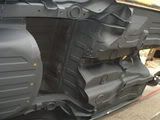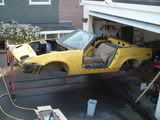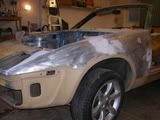Still trying to get my 5-speed box back together. Got the input shaft endfloat just right and had a spacer ground down to the correct thickness for the laysahft. Fitted it today and somehow, in 2 weeks while the box was stiing on the bench, another 0.5mm of play has crept in to the affair, so now with the "correct" spacer in, I still have lots of play. I swear I measured the play correctly (like 30 times) and wrote down the figures for the calculation, but there is no denying the total float is now 2.5mm when it was like 1.9mm. So back to getting another spacer then...
Any theories...
But here is my real question: The Haynes manual specifies a preload on the layshaft of 0.025 to 0.05mm, wheras the Triumph repair manual (posted recently)...shows a float no the layshaft of 0.005 to 0.055mm
Which should it be???
Thanks
1980 DHC TR7-V8 (was an 8V, then a Sprint)
Back on the road after 3 years restoring...




